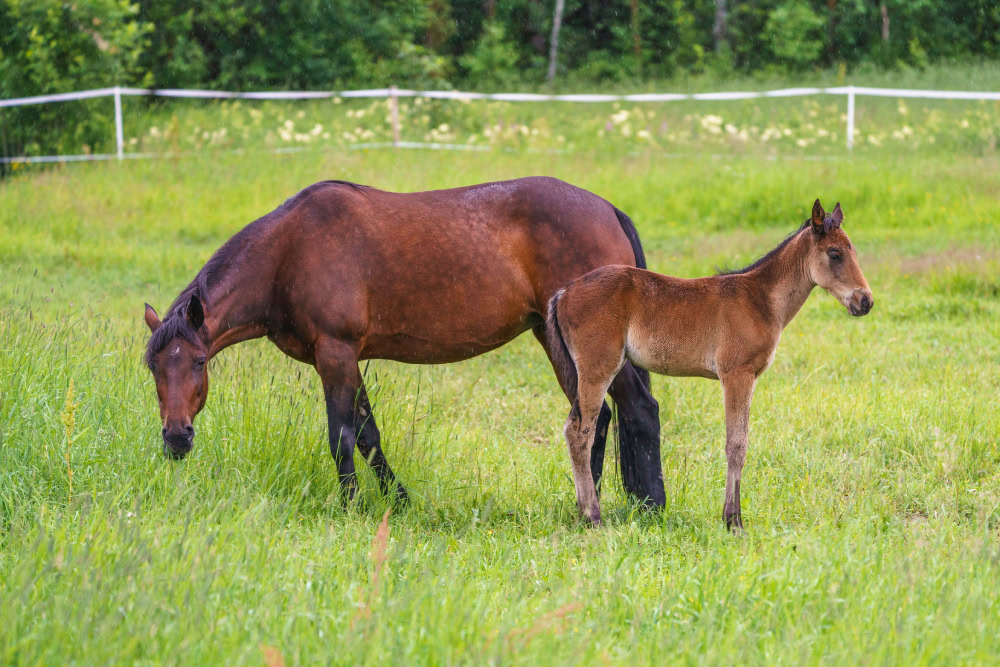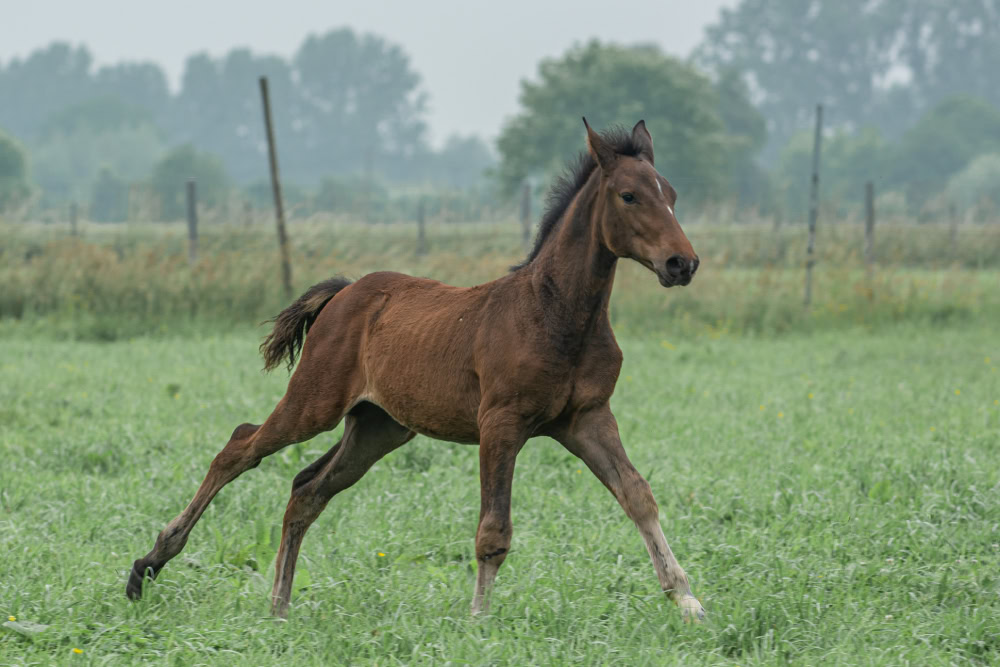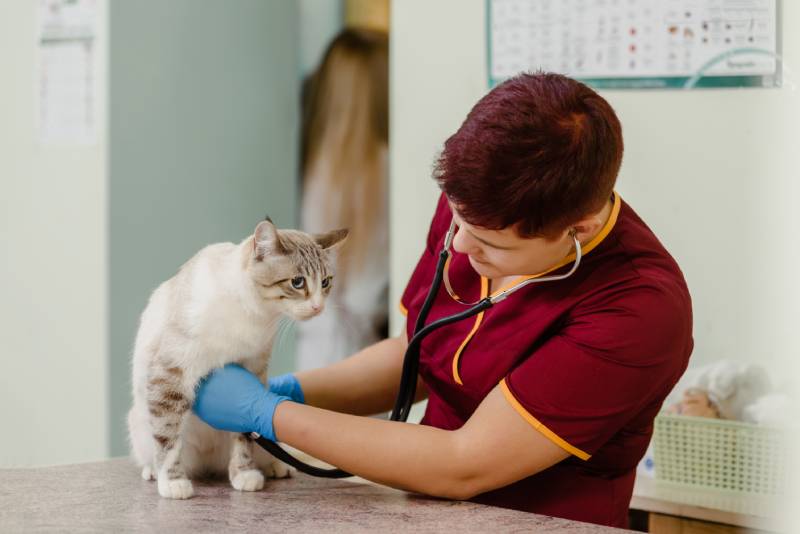VET APPROVED

The information is current and up-to-date in accordance with the latest veterinarian research.
Learn more »Click to Skip Ahead
Keeping pet horses is a rewarding experience; however, it is not without its fair share of struggles. Like other pets, horses too can suffer from diseases at times. It is important to realize the signs of some disease and take appropriate action to safeguard your pets.
Equine strangles is a highly contagious disease that many horses are susceptible to. It requires prompt veterinary attention and strict quarantine protocols. Read on as we discuss this disease in greater detail.

What Is Equine Strangles?
Strangles is a highly infectious disease of horses, donkeys, and mules. It is one of the most common infectious diseases of horses worldwide. It is caused by the bacteria Streptococcus equi equi. The bacteria primarily impacts the horse’s lymph system via the respiratory airways.
If a horse ingests or inhales the bacterium, it colonizes the lymph nodes of the upper respiratory tract, causing them to eventually enlarge. Excessively large lymph nodes may impair a horse’s ability to breathe, which makes it look like they are being strangled, hence the name of the disease.

Why Is Strangles So Common?
Strangles is common among all horses across the globe because of its relative hardiness in the environment, the ability of horses to remain asymptomatic (showing no signs of illness) while shedding the bacteria, and by their caretakers inadvertently exposing them to the bacteria (for example, by sharing the same equipment on multiple horses).
Part of the reason strangles is so common is because it rarely kills a horse. Morbidity of the bacteria is very high and can reach up to 100% in some horse populations. This means that all horses can be positive for the bacteria in some instances. Mortality rates, however, are relatively low. This allows carriers to continually shed the bacteria and infect naive horses.
Horses that recover continue to shed the bacteria for 4–6 weeks after recovery, with prolonged shedding of up to 18 months reported in some individuals. There have been efforts at eradicating this bacteria, but it continues to be challenging for the veterinary community to do so.
Signs of Strangles
Signs of the disease occur anywhere from 3–14 days after a horse has been exposed to the bacteria.
- Fever of 103°–106°F (39.4°–1°C)
- Discharge from one or both nostrils, often yellow-green in color
- Lethargy
- Enlarged lymph nodes and a swelling of the neck
- Difficulty swallowing
- An audible sound whenever the horse breathes in
- The horse may extend their head and neck
- Abscess rupture
Please note that not all the signs may be present in your horse.
su_box title=”Important: ” box_color=”#98BFB4″ radius=”0″]
In many parts of the world, including the United States, this disease is reportable, though state laws in the United States may vary. Contact your veterinarian if you suspect that your horse has strangles. Do not attempt to self-diagnose or self-treat this condition.
Diagnosis
Veterinarians usually diagnose the disease by taking a swab from your horse to send to a lab for culture purposes. This means the lab will attempt to see if your horse’s swab contains the bacteria by allowing the bacteria to grow in a controlled environment.
Your veterinarian may also opt for additional tests from a laboratory to confirm the presence of the bacteria.
Treatment
Veterinarians prescribe treatment for strangles on a case-by-case basis. Though the disease is bacterial in nature, the use of antibiotics remains controversial, and your veterinarian will likely only prescribe an antibiotic if the severity of the infection warrants it.
Most treatment protocols involve strict quarantine protocols and supportive care for your horse while they recover. This includes a dust-free environment, highly palatable feed, warm compresses on swollen lymph nodes, and anti-inflammatory, pain, and fever medications. Horses that refuse to eat might need assistance via a naso-gastric tube. Fluids and other supportive therapy might be prescribed depending on your horse’s condition.
If one horse in your herd has strangles, it is usually standard practice to test the entire herd and then quarantine them based on their disease status: positive, exposed but not showing signs, or negative.
Discuss appropriate biosecurity measures with your veterinarian to ensure that the quarantine process isn’t breached by you or anyone who comes in contact with your horses. Often, human caretakers inadvertently spread the bacteria as they go from one paddock to another.

Control & Prevention
As mentioned above, strangles might be reportable where you reside and, therefore, you should contact your veterinarian if you suspect that your horse has this disease.
Control and prevention protocols usually mandate a quarantine period for all new horses (for a period of at least 3 weeks), decontamination of all farm equipment, fly control (as flies can transmit the bacteria from one horse to another), and repeated tests for positive individuals to ascertain when their quarantine period should end.
Vaccination protocols exist for strangles and can reduce the risk of attack rate of the bacteria by around 50%. The vaccine is available in several forms, including an injectable form and an intranasal form. You should discuss an appropriate vaccination schedule with your veterinarian for your horses and choose one that fits you best.
Please note that in some parts of the world, vaccinations are considered mandatory before horses can be sold, used for recreational purposes or work, or be involved in sports.

Final Thoughts
Equine strangles is an extremely contagious bacterial disease of horses, donkeys, and mules. As this disease is reportable, you should contact your veterinarian if you suspect that your herd or an individual in your herd is displaying signs of this disease.
As the reporting, treatment, control, and prevention protocols vary depending on your geographical location and your horse’s condition, it is best to follow your veterinarian’s lead on the matter. Vaccinations for this disease can also be discussed with your veterinarian to offer your pet horses protection against the causative agent.
Featured Image Credit: Lucia L, Shutterstock










